Old Browser
This page has been recently translated and is available in French now.
Looks like you're visiting us from {countryName}.
Would you like to stay on the current country site or be switched to your country?


.png)

Multicolor flow cytometric analysis of RUNX3 expression in human peripheral blood cells and mouse lymph node cells. Panel 1. Human peripheral blood mononuclear cells (PBMC) were stained with APC-H7 Mouse Anti-Human CD8α (Cat. No. 560179/560273/561423), BV510 Mouse Anti-Human CD3 (Cat. No. 563109), and APC Mouse Anti-Human CD56 (Cat. No. 555518) antibodies. The cells were fixed and permeabilized with the BD Pharmingen™ Transcription Factor Buffer Set (Cat. No. 562574/562725) and stained with either PE Mouse IgG1, κ Isotype Control (Cat. No. 554680) or PE Mouse Anti-RUNX3 antibody (Cat. No. 564814). The two-color contour plots on the left show the correlated expression of Ig Isotype control staining (Upper Left Plot) or RUNX3 (Bottom Left Plot) versus CD8α for gated events with the light scattering characteristics of intact lymphocytes. Intact cells were also gated as indicated (Upper Right Plot) and used for the generation of the overlaid contour plot figure (Bottom Right Plot) showing the correlated expression of RUNX3 versus CD3 for the CD8+CD56+ (blue), CD8+CD56- (green), and CD8-CD56+ (red) cell subsets. Panel 2. C57BL/6 mouse lymph node cells (LNC) were stained with FITC Rat Anti-Mouse CD4 antibody (Cat. No. 553047/553046/561835) and then fixed and permeabilized (as described above), followed by staining with either PE Mouse IgG1, κ Isotype Control (Upper Plot) or PE Mouse Anti-RUNX3 antibody (Bottom Plot). The contour plots showing the correlated expression of RUNX3 (or Ig Isotype control staining) versus CD4 were derived from gated events with the light-scatter characteristics of intact lymphocytes. Flow cytometric analysis was performed using a BD LSRFortessa™ Flow Cytometer System.
.png)

BD Pharmingen™ PE Mouse Anti-RUNX3
.png)
Regulatory Status Legend
Any use of products other than the permitted use without the express written authorization of Becton, Dickinson and Company is strictly prohibited.
Preparation And Storage
Product Notices
- This reagent has been pre-diluted for use at the recommended Volume per Test. We typically use 1 × 10^6 cells in a 100-µl experimental sample (a test).
- Please refer to www.bdbiosciences.com/us/s/resources for technical protocols.
- Caution: Sodium azide yields highly toxic hydrazoic acid under acidic conditions. Dilute azide compounds in running water before discarding to avoid accumulation of potentially explosive deposits in plumbing.
- Source of all serum proteins is from USDA inspected abattoirs located in the United States.
- For fluorochrome spectra and suitable instrument settings, please refer to our Multicolor Flow Cytometry web page at www.bdbiosciences.com/colors.
- An isotype control should be used at the same concentration as the antibody of interest.
- Species cross-reactivity detected in product development may not have been confirmed on every format and/or application.
Companion Products
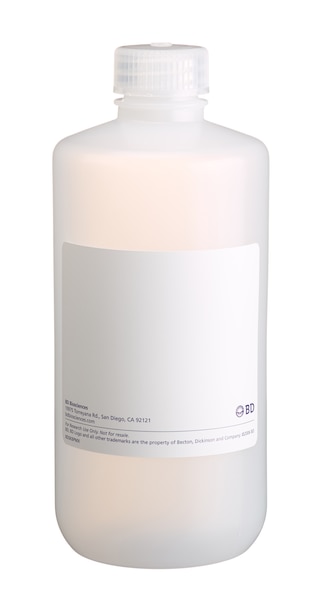
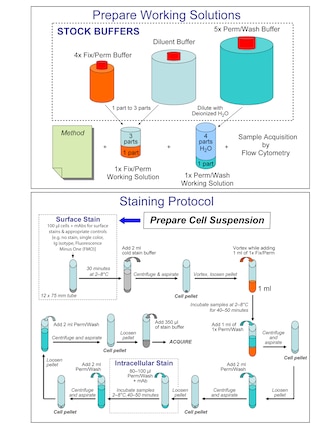
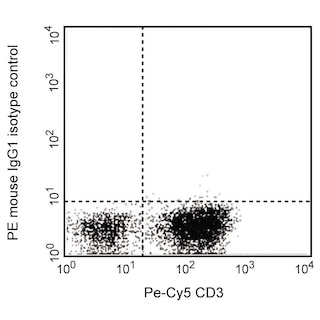
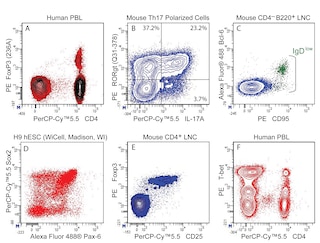
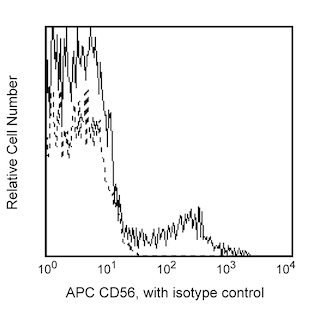
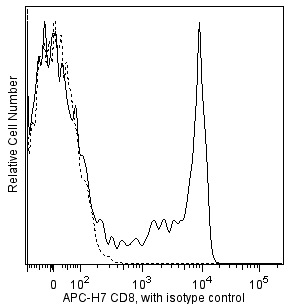
The R3-5G4 monoclonal antibody specifically binds to Runt-related transcription factor 3 (RUNX3) which is also known as Acute myeloid leukemia 2 protein (AML2), Core-binding factor subunit alpha-3 (CBFA3), and Polyomavirus enhancer-binding protein 2 alpha C subunit (PEBP2aC). RUNX3 is a member of the RUNX transcription factor family which includes RUNX1-3. RUNX3 is a key regulator of gene expression related to the development and differentiation of cells within the nervous and immune systems. In the immune system, RUNX3 is particularly involved in the commitment of CD8+ T cells in the thymus. RUNX3 is highly expressed and essential for the cytotoxic functions of NK cells, peripheral CD8+T cells and CD4+CD8αα intraepithelial lymphocytes in the gut. RUNX3 also plays a role in the differentiation and effector functions of Th1 cells. RUNX3 is activated downstream of the TGF-β signaling pathway and can play a role in tumor suppression. Aberrant expression of RUNX3 has been associated with tumorigenesis including the development of gastric and other cancers.

Development References (6)
-
Chuang LS, Ito K, Ito Y. RUNX family: Regulation and diversification of roles through interacting proteins. Int J Cancer. 2013; 132(6):1260-1271. (Biology). View Reference
-
Djuretic IM, Cruz-Guilloty F, Rao A. Regulation of gene expression in peripheral T cells by Runx transcription factors. Adv Immunol. 2009; 104(1):23. (Biology). View Reference
-
Ito K, Liu Q, Salto-Tellez M, et al. RUNX3, a novel tumor suppressor, is frequently inactivated in gastric cancer by protein mislocalization. Cancer Res. 2005; 65(17):7743-7750. (Immunogen: Western blot). View Reference
-
Lotem J, Levanon D, Negreanu V, Leshkowitz D, Friedlander G, Groner Y. Runx3-mediated transcriptional program in cytotoxic lymphocytes. PLoS ONE. 2013; 8(11):e80467. (Biology). View Reference
-
Reis BS, Rogoz A, Costa-Pinto FA, Taniuchi I, Mucida D. Mutual expression of the transcription factors Runx3 and ThPOK regulates intestinal CD4(+) T cell immunity. Nat Immunol. 2013; 14(3):271-280. (Biology). View Reference
-
Setoguchi R, Tachibana M, Naoe Y, et al. Repression of the transcription factor Th-POK by Runx complexes in cytotoxic T cell devel. Science. 2008; 19(5864):822-825. (Biology). View Reference
Please refer to Support Documents for Quality Certificates
Global - Refer to manufacturer's instructions for use and related User Manuals and Technical data sheets before using this products as described
Comparisons, where applicable, are made against older BD Technology, manual methods or are general performance claims. Comparisons are not made against non-BD technologies, unless otherwise noted.
For Research Use Only. Not for use in diagnostic or therapeutic procedures.
Report a Site Issue
This form is intended to help us improve our website experience. For other support, please visit our Contact Us page.